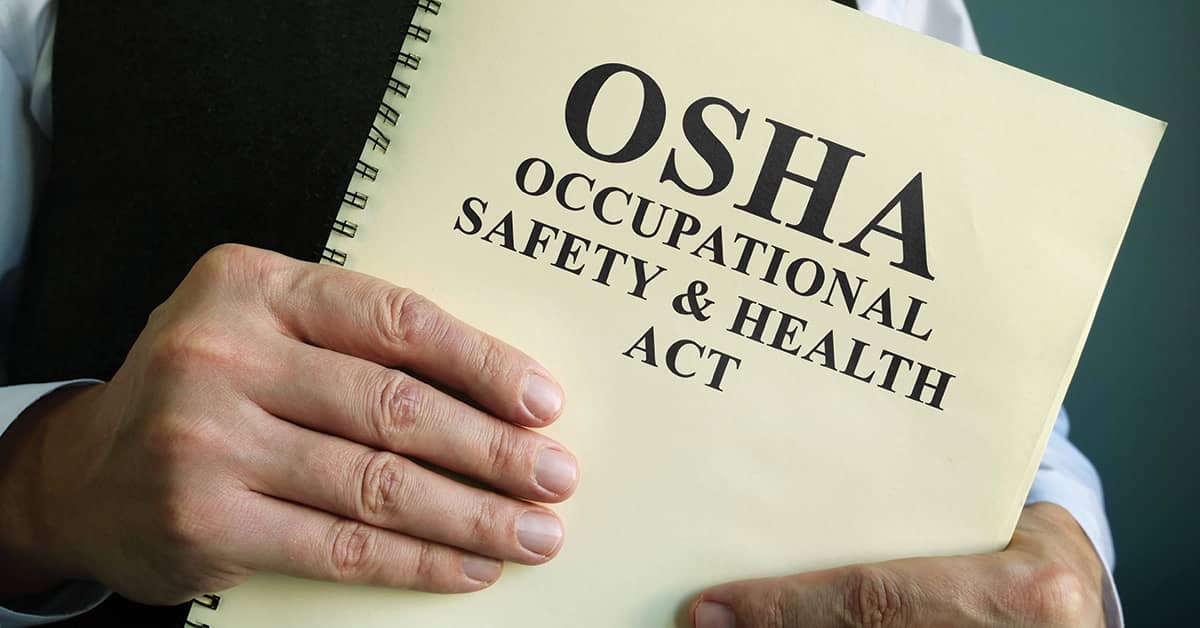Top ten OSHA general industry citations by penalty amount
Date Posted: 02/06/2023

Employers like to review OSHA’s annual list of top ten most-cited standards, but the list of citations by penalty amounts shows how any employer could face serious violations with significant penalties.
OSHA’s annual top ten list covers both general industry and construction, and it doesn’t change much from year to year, with the same ten standards showing up, although they often appear in a different order.
To look at the data another way, we pulled the top ten general industry standards by penalty amounts. Each standard racked up more than $2 million in penalties during the 2022 fiscal year that ended September 30, 2022.
- Lockout/tagout; 1910.147
- Machine guarding; 1910.212
- Powered industrial trucks; 1910.178
- Respiratory protection; 1910.134
- Hazard communication; 1910.1200
- Walking-working surfaces; 1910.22
- General Duty Clause
- Exit routes; 1910.37
- Electrical general; 1910.303
- Fall protection general industry; 1910.28
The first five appear on OSHA’s most-cited list, although in a different order. Violations for lockout/tagout and machine guarding are usually cited as “serious” with high fines, moving to the top of the list by penalty amount. In fact, lockout/tagout totaled more than $12 million in penalties.
Since we excluded construction (Part 1926), the second half of the list adds a number of standards that don’t appear on OSHA’s annual most-cited list.
Walking-Working Surfaces
Coming in at number six with just over $3 million in fines is the Walking-Working Surface regulation at 1910.22. Among other things, it requires keeping the workplace in a clean and dry condition, free from hazards like sharp objects, and correcting hazards before employees use the area.
Recently, an Ohio employer faced a proposed penalty of more than $10,000 under this standard. OSHA found oil spilled on a diamond plate metal working surface that created a slipping hazard.
The fall protection standard in the number 10 slot also appears in the Walking-Working Surface regulations. While fall protection in construction hits the top slot on OSHA’s overall list, fall protection in general industry also creates a risk of serious injuries. Total fines were just over $2.6 million.
Other top concerns
In seventh place, the General Duty Clause makes the list. OSHA can cite this only for serious hazards, so penalties are naturally higher. The exact hazard cited may differ, but OSHA has applied it to heat illness, ergonomics, and workplace violence (among other things).
Exit routes come in at eighth place. An obstructed route or locked exit door could cause fatalities by delaying egress during an emergency, so these are “serious” violations as well. OSHA also cites for missing or inadequate exits signs. These violations commonly occur in retail and warehousing as well as manufacturing.
Finally, improper use of electrical equipment could result in serious injury. The electrical standard at 1910.303 contains a lot of requirements, and includes a variation of the General Duty Clause which says, “Electric equipment shall be free from recognized hazards that are likely to cause death or serious physical harm to employees.” This section also requires using equipment “in accordance with any instructions included in the listing or labeling.” Problems may include overloading equipment, using the wrong voltage rating, damage to wires, and similar issues.
How Safety Management Suite Can Help
Employers need to follow dozens of regulations, and staying in compliance may require regular self-inspections to identify and correct any violations. The Audits feature in the J. J. Keller® SAFETY MANAGEMENT SUITE provides numerous ready-to-use checklists with questions on dozens of topics. The results can help you identify potential hazards or compliance issues and fix them before anyone gets hurt.
E-mail Newsletter
Sign up to receive the weekly EHS Insider email newsletter for safety articles, news headlines, regulatory alerts, industry events, webcasts, and more.